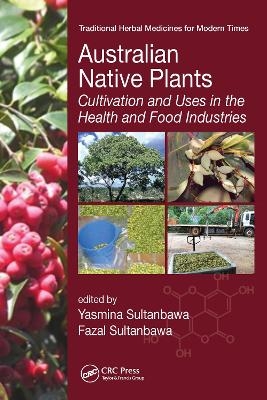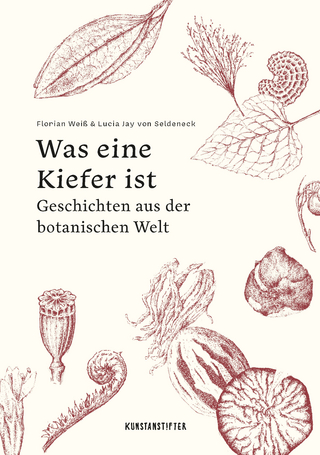
Australian Native Plants
CRC Press (Verlag)
978-1-032-09788-6 (ISBN)
Australian Native Plants: Cultivation and Uses in the Health and Food Industries provides a comprehensive overview of native food crops commercially grown in Australia that possess nutritional and health properties largely unknown on a global basis. These native foods have been consumed traditionally, have a unique flavor diversity, offer significant health promoting effects, and contain useful functional properties. Australian native plant foods have also been identified for their promising antioxidant and antimicrobial properties that have considerable commercial potential.
This book is divided into three parts: The first part reviews the cultivation and production of many Australian native plants (ANP), including Anise Myrtle, Bush Tomato, Desert Raisin, Davidson’s Plum, Desert Limes, Australian Finger Lime, Kakadu Plum, Lemon Aspen, Lemon Myrtle, Muntries, Native Pepper, Quandong, Riberry, and Wattle Seed. It then examines the food and health applications of ANP and discusses alternative medicines based on aboriginal traditional knowledge and culture, nutritional characteristics, and bioactive compounds in ANP. In addition, it reviews the anti-obesity and anti-inflammatory properties of ANP and discusses food preservation, antimicrobial activity of ANP, and unique flavors from Australian native plants.
The third section covers the commercial applications of ANP. It focuses on native Australian plant extracts and cosmetic applications, processing of native plant foods and ingredients, quality changes during packaging, and storage of Australian native herbs. The final few chapters look into the importance of value chains that connect producers and consumers of native plant foods, new market opportunities for Australian indigenous food plants, and the safety of using native foods as ingredients in the health and food sectors.
Yasmina Sultanbawa earned a graduateship in chemistry from the Institute of Chemistry, Ceylon, in Sri Lanka, an MSc in food science from the University of Reading in the United Kingdom, and a PhD in food chemistry from the University of British Columbia, Canada. After 15 years employment at the Industrial Technology Institute in Sri Lanka, she has worked for eight years as a senior food scientist at the Department of Agriculture and Fisheries, Queensland, the past five of which she has been a senior research fellow at the Queensland Alliance for Agriculture and Food Innovation, University of Queensland, Australia. Fazal Sultanbawa earned a BSc and an MPhil in agriculture and crop science from the University of Peradeniya, Sri Lanka, and a PhD from the University of Georgia, Athens, Georgia, focusing on biotechnology and the mass propagation of plants using tissue and protoplast culture. For the past five years, he has been technical manager at Agrichem Pty Ltd., Brisbane, Australia, a leading international plant nutrition company, where he is responsible for developing their crop nutrition programs, R&D programs, and the conduct of field trials. He also has held senior management positions in several national and international companies.
Overview of Australian Native Plants. CULTIVATION AND PRODUCTION. Cultivation of Anise Myrtle (Syzygium anisatum). Cultivation of Bush Tomato (Solanum centrale): Desert Raisin. Cultivation of Davidson’s Plum (Davidsonia spp.). The Reproductive Systems of Davidson’s Plum (Davidsonia jerseyana, D. pruriens, and D. johnsonii) and the Potential for Domestication. Cultivation of Desert Limes (Citrus glauca). Cultivation of Australian Finger Lime (Citrus australasica). Production of Terminalia ferdinandiana Excell (‘Kakadu Plum’) in Northern Australia. Cultivation of Lemon Aspen (Acronychia acidula). Cultivation of Lemon Myrtle (Backhousia citriodora). Cultivation of Muntries (Kunzea pomifera F. Muell.). Cultivation of Native Pepper (Tasmannia lanceolata). Cultivation of Quandong (Santalum acuminatum). Cultivation of Riberry (Syzygium luehmannii). Production of Wattle Seed (Acacia victoriae). FOOD AND HEALTH APPLICATIONS. Alternative Medicines Based on Aboriginal Traditional Knowledge and Culture. Nutritional Characteristics and Bioactive Compounds in Australian Native Plants: A Review. Australian Native Plants: Anti-Obesity and Anti-Inflammatory Properties. Food Preservation and the Antimicrobial Activity of Australian Native Plants. Unique Flavors from Australian Native Plants. COMMERCIAL APPLICATIONS. Native Australian Plant Extracts: Cosmetic Applications. Processing of Native Plant Foods and Ingredients. Quality Changes during Packaging and Storage of Australian Native Herbs. Value Chains: Making the Connections between Producers and Consumers of Native Plant Foods. New Market Opportunities for Australian Indigenous Food Plants. Appendix: Australian Native Food Recipes.
| Erscheinungsdatum | 01.07.2021 |
|---|---|
| Reihe/Serie | Traditional Herbal Medicines for Modern Times |
| Zusatzinfo | 68 Illustrations, black and white |
| Verlagsort | London |
| Sprache | englisch |
| Maße | 156 x 234 mm |
| Gewicht | 571 g |
| Themenwelt | Naturwissenschaften ► Biologie ► Botanik |
| Technik ► Lebensmitteltechnologie | |
| Weitere Fachgebiete ► Land- / Forstwirtschaft / Fischerei | |
| ISBN-10 | 1-032-09788-4 / 1032097884 |
| ISBN-13 | 978-1-032-09788-6 / 9781032097886 |
| Zustand | Neuware |
| Informationen gemäß Produktsicherheitsverordnung (GPSR) | |
| Haben Sie eine Frage zum Produkt? |
aus dem Bereich


